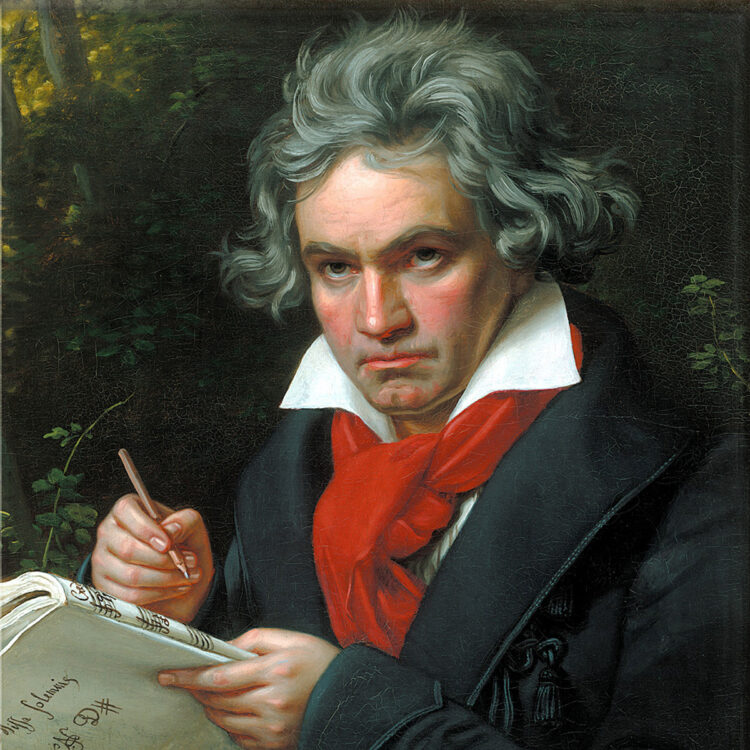Piano Concerto No. 2 in B-flat, Opus 19
Ludwig van Beethoven was born in Bonn (then an independent electorate) probably on December 16, 1770 (he was baptized on the 17th), and died in Vienna on March 26, 1827.
Beethoven’s Piano Concerto No. 2 in B-flat, Opus 19 started its life in Bonn around 1790, when Beethoven was 20. The first movement is likely the only surviving element of the original version; it was stitched and patched over the years before its premiere in Vienna in March 1795. Beethoven substituted a new rondo for the original finale in 1798. Beethoven may have played the B-flat concerto in March or December of 1790 in Vienna, but it seems more likely that it was the C major concerto that he played that December; we do know that he played the B-flat concerto in Prague in 1798. Some further, slight revisions followed before the concerto was published in 1801. In addition to the solo piano, the score calls for a relatively small orchestra of 1 flute, 2 oboes, 2 bassoons, 2 horns, and strings (first and second violins, violas, cellos, and double basses). The Concerto No. 2 is about 30 minutes long.
As with the C major Concerto, the opening movement of the Concerto No. 2 has a military air. The main theme juxtaposes brisk fanfares with lyrical phrases, all of it attractive if rather on the conventional side. After the usual orchestral introduction the soloist first enters with a quasi-new idea based on earlier material; he soon slips into virtuosic roulades. The soloist throughout will tend to emphasize the lyrical aspect of the material, providing some quite lovely passages. And beneath the not particularly bold material Beethoven’s searching nature can’t help showing itself in episodes veering into surprising keys: the second theme of the first movement has a leap into D-flat major, which in the recapitulation returns as a still more striking G-flat major, a rare and exotic tonality in those days.
If the first movement never entirely escapes Beethoven’s Bonn apprenticeship, the next two movements sound more mature, more Viennese. The Adagio is Mozartian in conception but more nearly Beethovenian in tone, with an elegantly nocturnal atmosphere. It echoes the preciousness of the 18th-century galant mood, but also the lofty choruses of Mozart’s Magic Flute.
For the rondo finale he sketched a dancing 6/8 main theme that did not take wing until he moved its pickup note over to the downbeat, making a droll hopping effect. The movement’s middle section jumps into at Turkish or Gypsy-flavored minor. The soloist ends the piece with a blaze of double trills in the right hand, a specialty of Beethoven the young virtuoso.
Jan Swafford
Jan Swafford is a prizewinning composer and writer whose most recent book, published in December 2020, is Mozart: The Reign of Love. His other acclaimed books include Beethoven: Anguish and Triumph, Johannes Brahms: A Biography, The Vintage Guide to Classical Music, and Language of the Spirit: An Introduction to Classical Music. He is an alumnus of the Tanglewood Music Center, where he studied composition.
The first American performance of the Second Concerto was given by the Brooklyn Philharmonic on January 21, 1865, with Theodor Eisfeld conducting and J.N. Pattison as soloist.
The first Boston Symphony performance was a single performance on February 17, 1948, in New Haven, CT, with soloist Bruce Simonds under Richard Burgin. Burgin also conducted the BSO’s first subscription performances of the concerto, in December 1953 with soloist Grant Johannesen.

